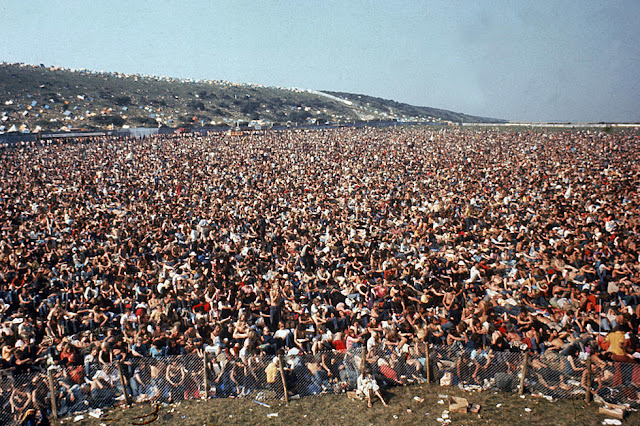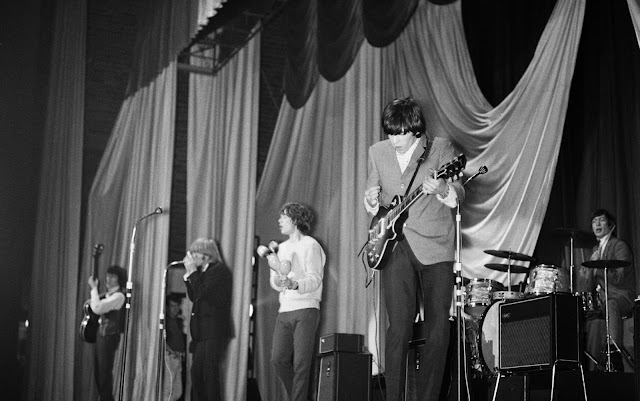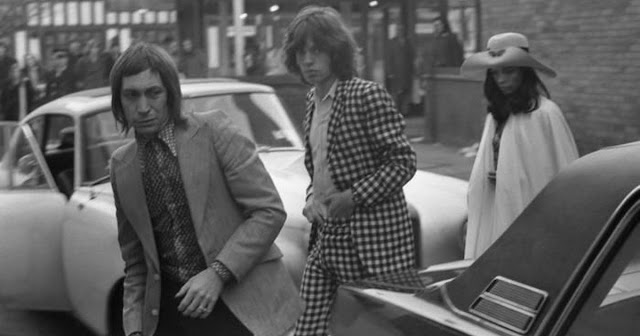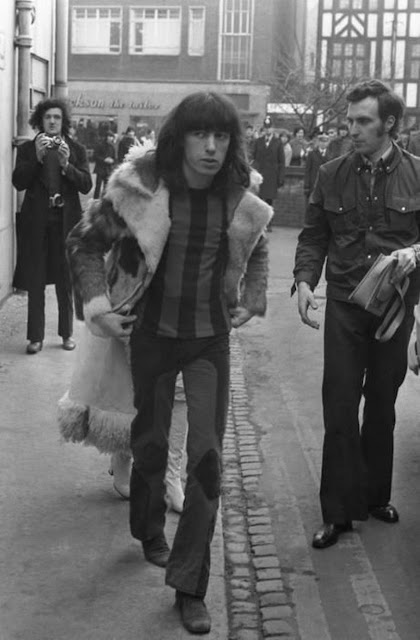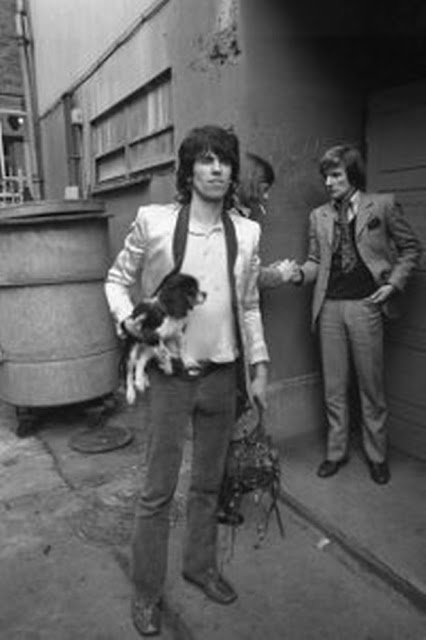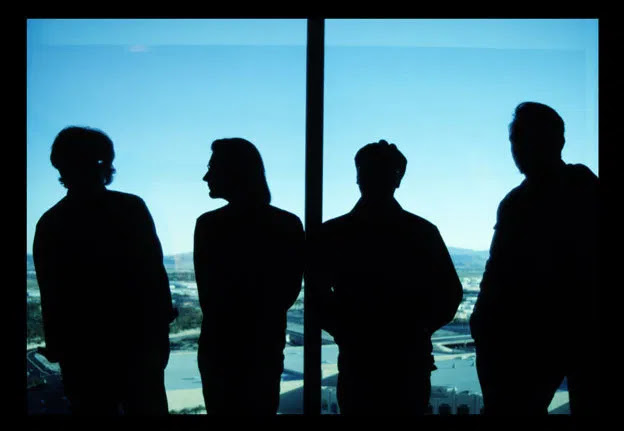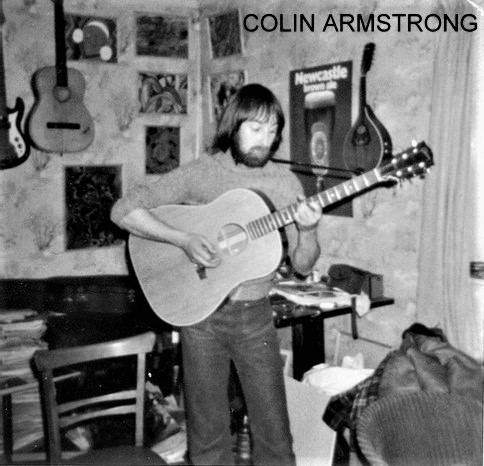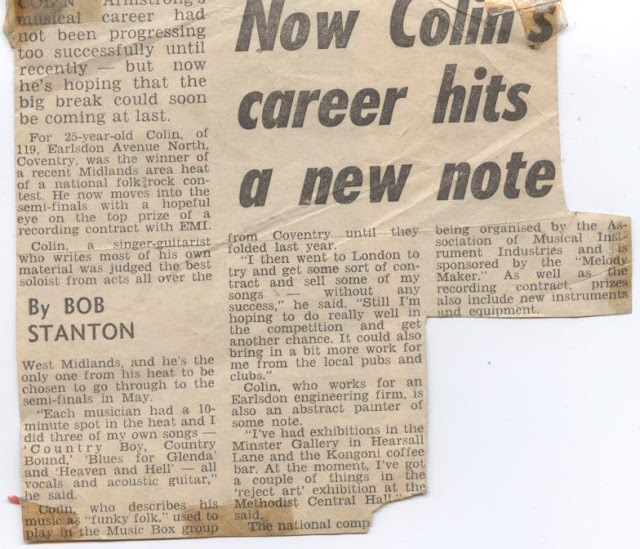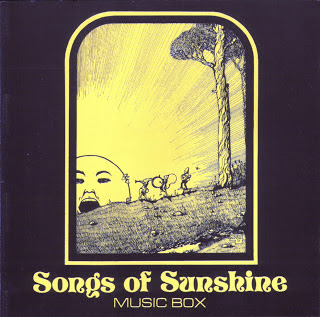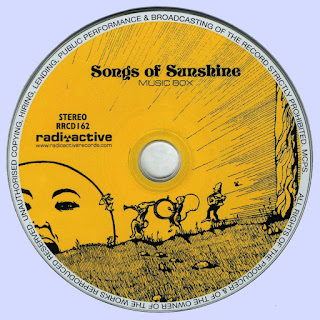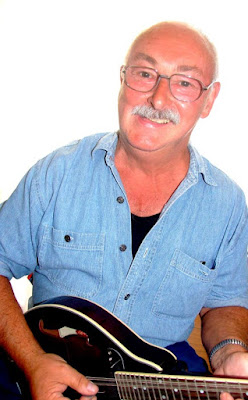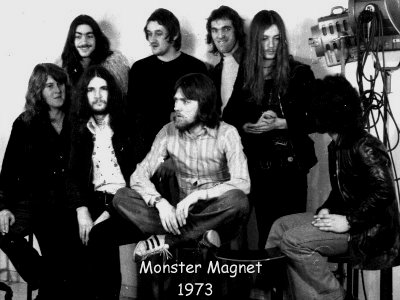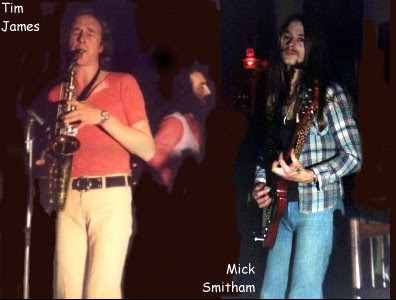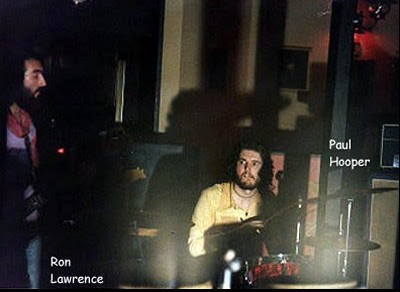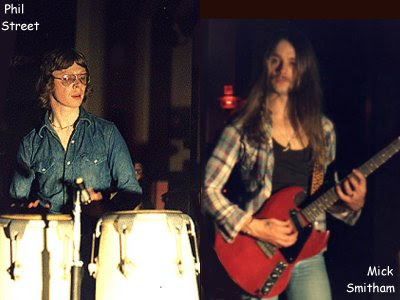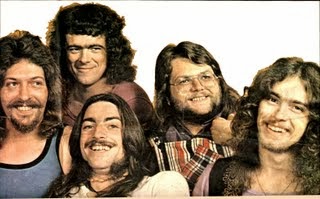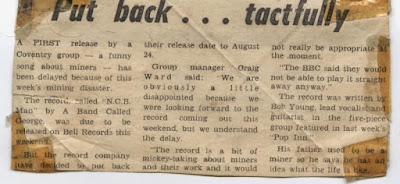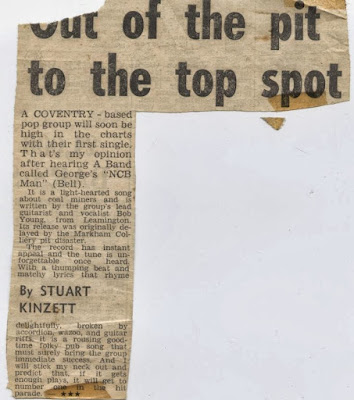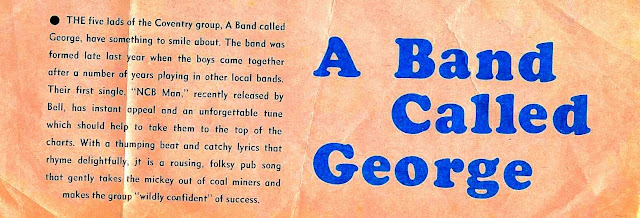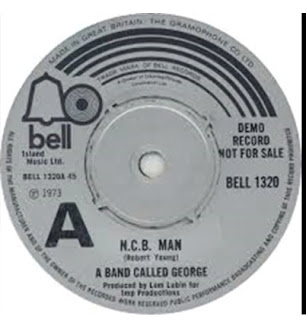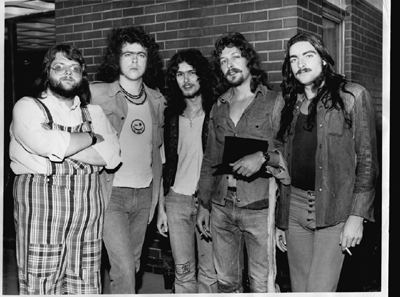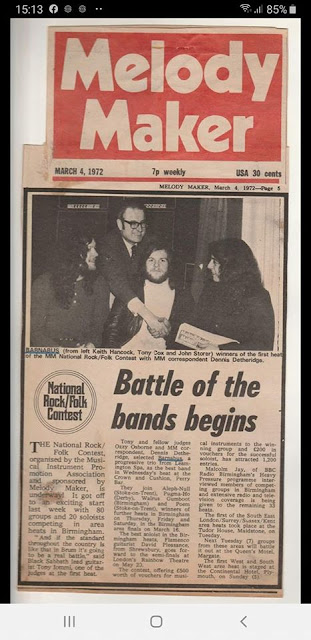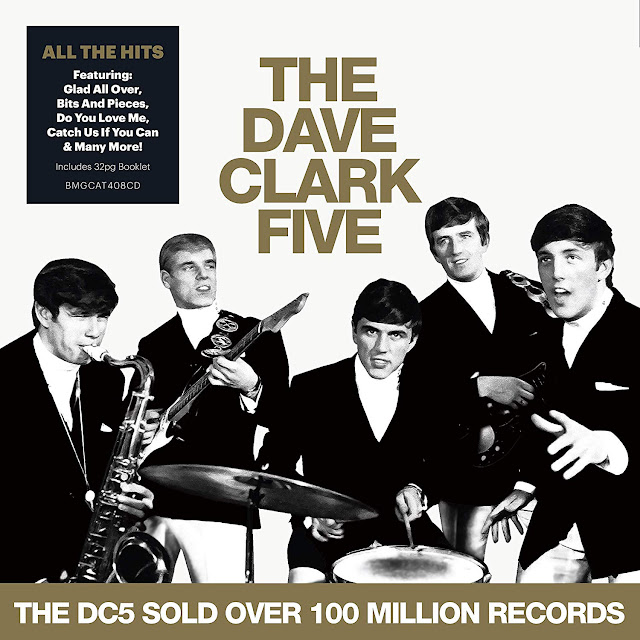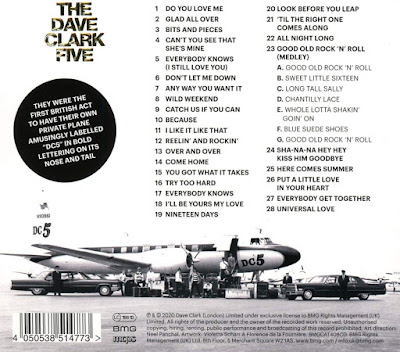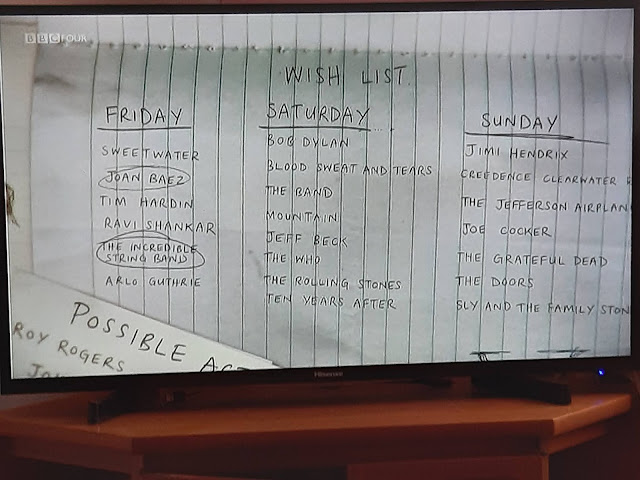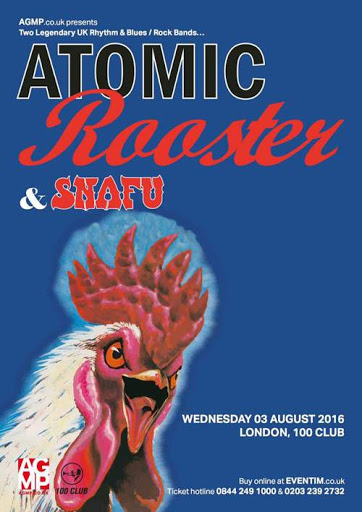Barnabus
by Pete Clemons
Barnabus, who originally formed in the Leamington Spa area, were and still are: John Storer on a 1969 Gibson SG, vocals, Keith Hancock on a 1963 Hagstrum Corrado bass, vocals and Tony Cox on drums. They came together in 1970 when John and Keith had, not long before, split from covers group The Jay Bee Kay Peys aka The JBKP’s, joined forces with Tony who, himself, had just left his band The Rockin’ Chair Blues Band. Early influences for Barnabus came from the still relatively fledging rock era where bands and artists like Black Sabbath, Ten Years After and Jimi Hendrix were seen to be at the forefront.
The Jay Bee Kay Peys, formed during 1968, had been a popular pop covers band playing the music by the likes of Free, Deep Purple and Led Zeppelin. While active The JBKP’s had in fact gained some valuable studio experience when they entered the Midland Sound Studios at Balsall Common. There, they recorded a pair of original songs in the form of a single. The A side being ‘Look at the Colours’ written by John and his Mother Sylvia c/w an instrumental titled ‘Autumn in Switzerland’ written by John and another JBKP member Bob Chimes. A handful of copies were pressed to sell locally but did not gain general release.
The Rockin’ Chair Blues Band who last performed during the late 1960’s, had been another hard working group. They were regularly seen at venues such as the Drumbeat Club at the Globe Hotel in Warwick. And one of the bands standout gigs was the 1969 weekend music marathon staged at the Umbrella Club in Queen Victoria Road, Coventry alongside other bands such as The Chris Jones Aggression, Wandering John, Dando Shaft and many other leading Coventry and Warwickshire based groups.
Tony Cox takes up the story ‘I was aware of the Jay Bee Kay Peys, John and Keith’s old band, from the Leamington circuit but we had never actually met. Obviously they were aware of me too because when the RCBB folded they approached me and suggested we get together. We started playing rock covers but that soon progressed to us writing our own stuff. At this time I was playing a nice Premier kit, which Steve Broughton had helped me select’. Being friends of Broughton’s and Vic Unitt the RCBB dropped in at their flat in London from where Tony and Steve drove to a local music shop.
The Rockin’ Chair Blues Band line up was completed by Martin Johnson on bass, lead guitarist Stuart ‘Digger’ Davies and Jim Gault on rhythm guitar and they played a mix original material and covers by the likes of Muddy Waters and Howlin’ Wolf.
Barnabus’s debut gig was at Chipping Norton Town Hall on 26th June 1970. This was the first of, what eventually total, an impressive hundred or so dates for the band. But no sooner had they began gigging than there began to be some confusion over their name.
It seemed as though the bands booking agents, for whatever reason, tried to get the band to change their name to Barnabas Legge and began heavily promoting them as such. The newspaper advertising, in the local press, of the band at that time certainly substantiates that claim.
But despite this muddle the band members insisted they remained as Barnabus. Tony Cox clears up some of the confusion: “Barnabas (sic) Legge was the name our booking agents tried to persuade us to use, unsuccessfully!”
However, bass player Keith Hancock remembers it all slightly differently: ‘I was studying at Coventry Technical College at the time and was researching law when I came across a character from Coventry called Barnabus Legge who had been hung for murder in the 18th century. So we named the band Barnabus Legge as it was a sort of macabre name with its sinister background. We dropped the Legge part after about a year when a promoter called Carol Knee(from Friars promotions) made an objection to it…Carol Knee was therefore the person credited as coining the phrase ‘cut the legge off’.
One of the venues that Friars promotions regularly sent Barnabus was to the Walsgrave Pub on the Walsgrave Road in Coventry. These ‘raves at the grave’, to this day, still bring back fond memories to each of the band members. The Walsgrave was also the home to Coventry DJ Pete Waterman who often shared the billing with them.
Barnabus soon began to develop a heavy guitar led rock style that was quite prevalent on the ‘underground scene’ at the time. They also set about writing some very good original material and began to build up a solid repertoire.
And pivotal to all of this was a young lyricist, poet and a good friend of the band named Les Bates. Leamington born Les had once had his work described by local press as being as ‘articulate’ and, ‘being better than a lot of name bands around at the time’. According to John Storer, ‘Les had always been there from the beginning’. And it soon became apparent that we could put our music to Les’s lyrics’. To help broaden their imaginations Les even encouraged the band to attend a performance by poet Roger McGough gig at the, then, recently opened Spa Centre, Leamington.
Armed with sufficient material Barnabus entered the studio during 1971 and recorded their album, the one you are holding now as it happens. The studio was called Monty Bird’s studios, based in Snitterfield near Stratford upon Avon (aka Bird Sound Studios). These studios later became better known locally as Tank Studios. Monty Bird himself was joined in his venture by Bob Young, a local entrepreneur who had formed the Sunshine Music agency based in Gulson Road, Coventry. Bob also ran a folk club/venues and such like. Bob, also from Leamington Spa, along with his brother Colin would also form an outfit named ‘A Band Called George’ (Bell label recording artistes). Tank studios would ultimately run their own independent record label and produced several releases in the mid to late seventies. They handled artists like The Armpit Jug Band, John Golding and Sean Cannon and many others.
The result of the sessions, held between the 6th and 13th November, was that twelve acetates were produced. Originally, the idea was to produce an ambitious double album. The tapes were used to promote the band for a record deal and a few agents for gigs. It was recorded in Mono and on 4 track tape. John recalls that period ‘About a dozen copies were pressed and sold to friends and at gigs for a fiver. There were ten songs on the double album; ‘Winter Lady’ and ‘Mortal Flight’ were not on it as they were recorded later, in stereo. Only two copies of the album had artwork, produced by hand by our roadie Simon Bullpit. He did one for Tony and one for my Mum’.
Consistent throughout the 12 tracks that make up the finished album is clear evidence of a band that have truly bonded. Rather than just being three individuals, they spoke as one. John Storer’s lead guitar playing is dominant throughout. And time and again you are subjected to attention grabbing soloing. Underpinning all of this you have this powerhouse of a rhythm section. This album really does showcase some extremely fine and untapped talent.
During March 1972, Barnabus gained a major breakthrough by winning the Midlands heat of the Melody Maker Rock & Folk contest. The competition, held at the Crown and Cushion in Perry Barr, Birmingham, was significant because the judges had ben Ozzy Osbourne and Tony Iommi of Black Sabbath fame. After Barnabus had performed ‘Winter Lady’ live both Tony and Ozzie stood up and applauded. They shook hands with the band telling them how great their music was and that their standard was very high.
Both ‘Winter Lady’ and ‘Mortal Flight’ had been adapted from poems written by Les Bates and given to the band after the album had been recorded. The winter lady in question had been about a girl friend of Les’. ‘Mortal Flight’ was written around the idea of Samson and his strength against adversity. A blind man, who was taking on corruption, and had the elements of natural forces behind him. Barnabus decided to combine the two songs, ‘Winter Lady’ and ‘Penny….Come in From the Rain’ to create a kind of rock/folk/myth and regular life fusion.
The next round of the competition was held at Birmingham University but Barnabus failed to progress despite a solid performance. There had been a misinterpretation of the rules and Barnabus lost out on a technicality to a band that had performed a cover version of Black Magic Woman. It was a very good version of Black Magic Woman though. But Barnabus had been under the impression that the competition had been for original music only.
Despite all that, the success at Melody Maker contest enabled Barnabus to further their growing reputation which resulted in them gaining wider recognition and breaking out beyond the confines of Coventry and Warwickshire.
A sudden surge of activity led to several notable support slots for bands such as Man, Trapeze, Van der Graff Generator, Hatfield and the North, Indian Summer and the Edgar Broughton Band at venues like the Chesford Grange near Kenilworth, Warwick University and Henry’s Blues House in Hurst Street, Birmingham.
Birmingham’s Judas Priest even supported Barnabus when Priest was an up and coming band. As Keith reflects ‘Creating music with no boundaries these were, indeed, great days of adventure. And these were, still, the relatively early progressive and heavy rock days’.
Another memorable occasion for Barnabus was at the Plaza Ballroom in Dudley. In attendance was Robert Plant who walked in as they were performing their set that did include ‘Communication Breakdown’ amongst their own songs. The band, along with John’s Mum and Dad, had a really good chat with him at the bar afterwards. John’s Mum was very taken by Robert, initially thinking he was a member of The Move. John’s Mother, however, did leave with a smile on her face after Robert politely kissed the back of her hand before he roared off in his Aston Martin DB5.
Barnabus were even invited down to London where they performed at the Temple Club in Wardour Street taking to the stage, late, at around two or three in the morning. Another London booking, which appears to have turned out to be a real mismatch, was at the Kensington Conservative Club. Keith remembers that they ‘played to a suited up crowd of hooray henry’s. There was a portrait of the queen behind us and I cracked a joke about it being the first time I’ve played in front of her majesty….we went down like a brick budgie!’.
Each of the band members agree, however, that being support band to Hawkwind at the Locarno in Coventry, during April 1972 was probably their most prestigious gig, and, for a variety of reasons. Hawkwind had recently had a van broken into and lost several thousand pounds of equipment. It was a devastating loss that had threatened to finish the band. For the Locarno gig a Hawkwind roadie struck up a deal with Barnabus. If Hawkwind could borrow their Park PA then, in return, Barnabus got to use Hawkwind’s rigging. Spurred on by a partisan home following, Barnabus had to perform as many as three encores. And, as John Storer reflects, it was so thrilling to hear such a large crowd shouting out for tracks to be played such as ‘Winter Lady’.
But Barnabus were still chasing that all important contract. Trying to help things a long John’s father, who also ran the day to day business of the band, sent a copy of their music to the light entertainment department at the BBC. It was acknowledged with a ‘thanks but no thanks, this is not really what we are about’ type of letter.
And then, towards the end of 1972, the trio spent a day in London visiting the offices of Island, Decca and possibly one other record label.
After hearing their tapes the Island label representative told the band bluntly that they were a three piece and this could be clearly heard in their music. And that ‘Not enough was going on within it’.
At Decca it got even worse as officials kept looking at their watches throughout the proceedings. The did mention that they could hear that Barnabus were influenced by Deep Purple in their style of music but if he had the choice to sign either Deep Purple or Barnabus then they would pick the real ones.
Incidentally, when their pressing plant was over capacity, EMI records would ask either Decca or Pye to press albums for them. And this happened to Deep Purple’s Made in Japan release. At around the time when Barnabus approached the label a number of Decca contract pressings of the album were released that famously contained various errors.
The day in the capitol was the final straw. Disillusioned, and with ego’s deflated in a day, the trio headed for home to weigh up their options. Despite being so close to securing a deal, Barnabus decided to split up at the end of 1972. In fact they eventually disbanded after fulfilling their commitments with a final appearance at The Walsgrave Pub in Coventry during January / February 1973.
The passage of time can never erase that fact. Barnabus were certainly on the cusp of something very special. But unlike their contemporaries they just never had that slice of luck or that killer single needed to take them to that next level. Today John and Keith still play regularly together in a new version of the Jay Kay 60s band. While Tony is playing with several local bands. Their love of playing live shows no sign of diminishing. Maybe their time is due now. Who knows?
The War Drags On – Barnabus 1971
Editor’s Note – Their 1971 album is on Rise Above Records who say –
“Barnabus were a band from the West Midlands/Warwickshire region of the UK, who were active between the years 1970-1973. During that time they built up a local reputation and recorded an album of heavy-duty material in late 1971, which has never seen the light of day until now!
The CD edition comes with a 44-page booklet detailing the history of the band, including many photos and flyers from their personal archives. The double album comes in gatefold sleeve featuring original ‘homemade’ artwork for one of the acetates owned by a band member. Truly a cult album for fans of obscure, heavy 70’s progressive hard rock!”
ere a band from the West Midlands/Warwickshire region of the UK, who were active between the years 1970-1973. During that time they built up a local reputation and recorded an album of heavy-duty material in late 1971, which has never seen the light of day until now!
Here is an earlier article Pete Clemons wrote on the band for the Coventry Telegraph with photos and youtube

